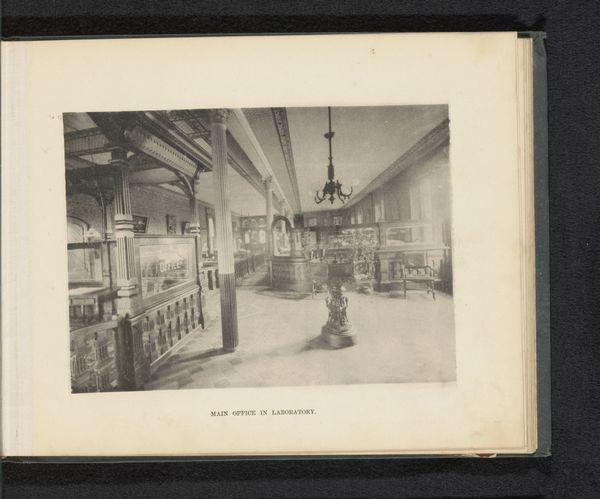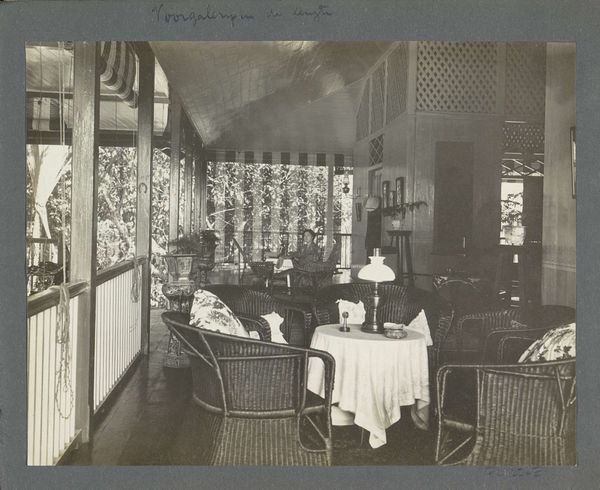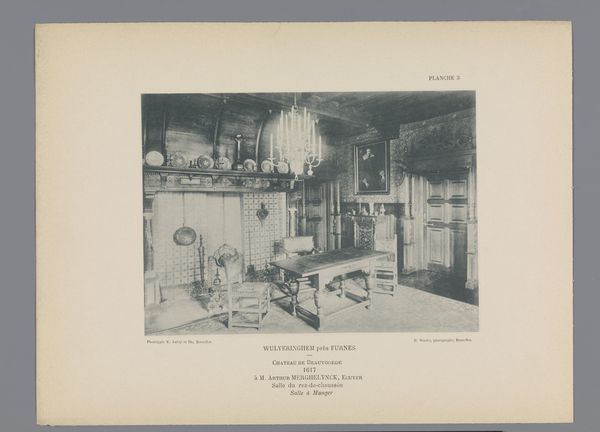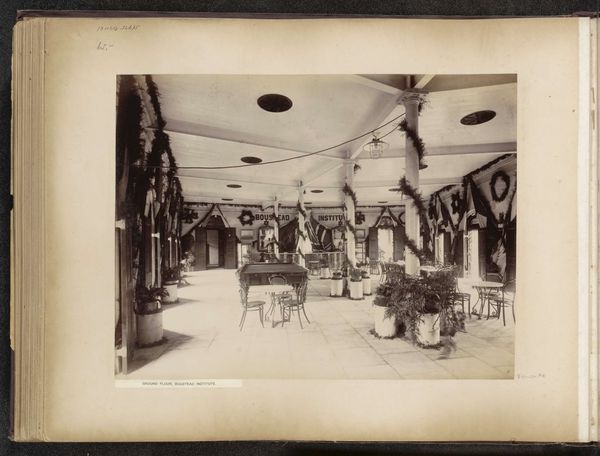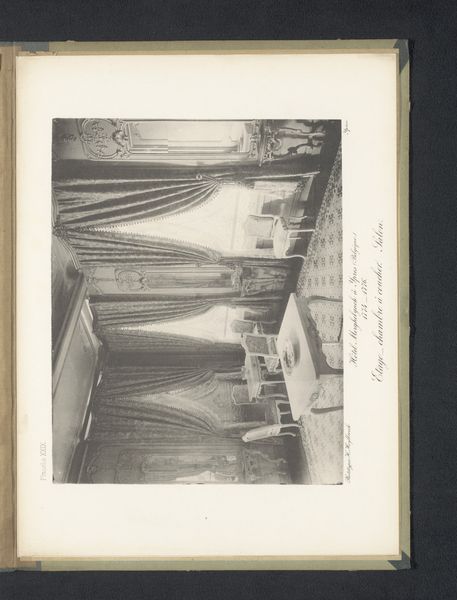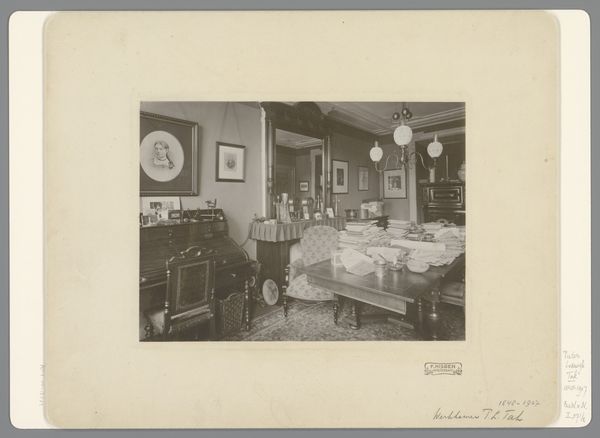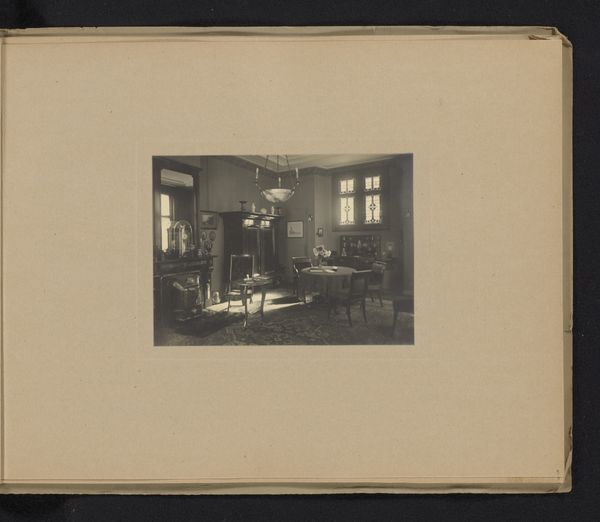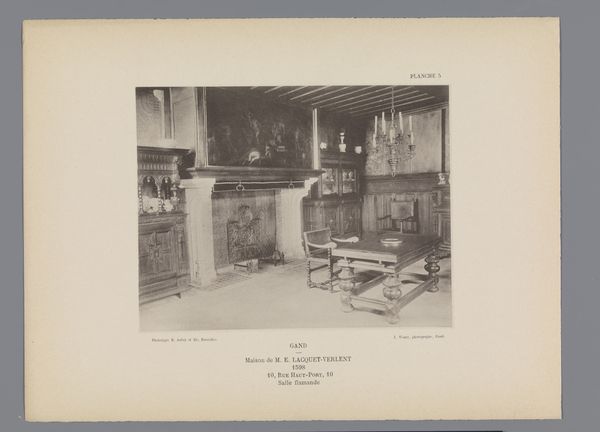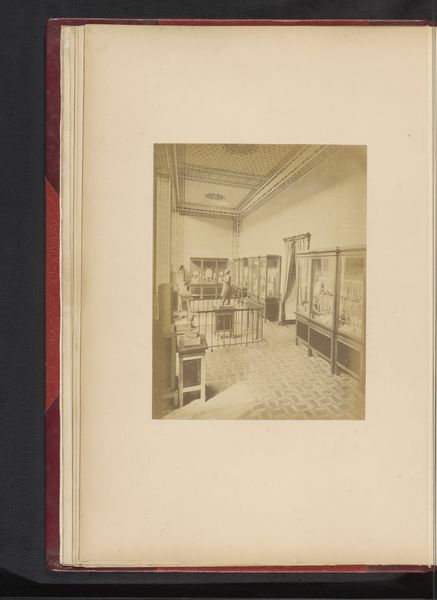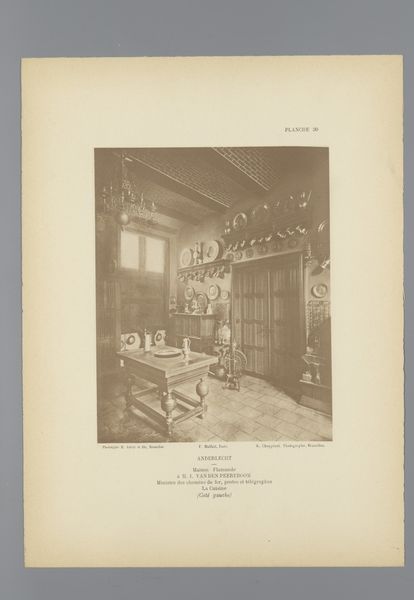
photography, gelatin-silver-print
#
still-life-photography
#
landscape
#
photography
#
gelatin-silver-print
Dimensions: height 140 mm, width 191 mm
Copyright: Rijks Museum: Open Domain
Editor: So, this gelatin-silver print captures the "Interior of the Train Wagon of George Gill Green," dating to before 1889. It looks like a photograph of a really opulent train car. What I find interesting is how closely it resembles a Victorian drawing room, even with the rocking chairs! How do you read this image? Curator: It’s fascinating, isn’t it? This photograph speaks volumes about class, luxury, and mobility during the late 19th century. Notice the attention to detail, from the elaborate window dressings to the perfectly set table. Editor: Absolutely! It's staging a domestic interior in a mobile setting. Curator: Exactly! But consider this: photography itself, especially in this meticulously staged setting, was also about displaying status. Think about the accessibility of train travel at the time. This wasn’t for everyone. The photograph reinforces that division, showcasing an almost theatrical performance of wealth for those who may never have seen such luxury. Who do you imagine the intended audience was for such images? Editor: That’s a good point. It might have been intended to impress other wealthy individuals, perhaps reinforcing social hierarchies and promoting the railroad company itself. Were photographs like these common at the time, used as advertising? Curator: Precisely! These photographs served to sell not just transportation, but a lifestyle—an aspirational image. In fact, railroads heavily influenced how we conceive of time and space; marketing the comfort of private train cars cemented their impact in elite circles. Editor: Wow, that’s not something I had thought about before. I initially just saw the surface-level opulence, but understanding its role in a wider socio-economic context gives it a totally different depth. Curator: That’s exactly it! Images rarely exist in a vacuum. Analyzing how they circulate and function within particular power structures can be just as insightful as appreciating the artistic technique itself.
Comments
No comments
Be the first to comment and join the conversation on the ultimate creative platform.
